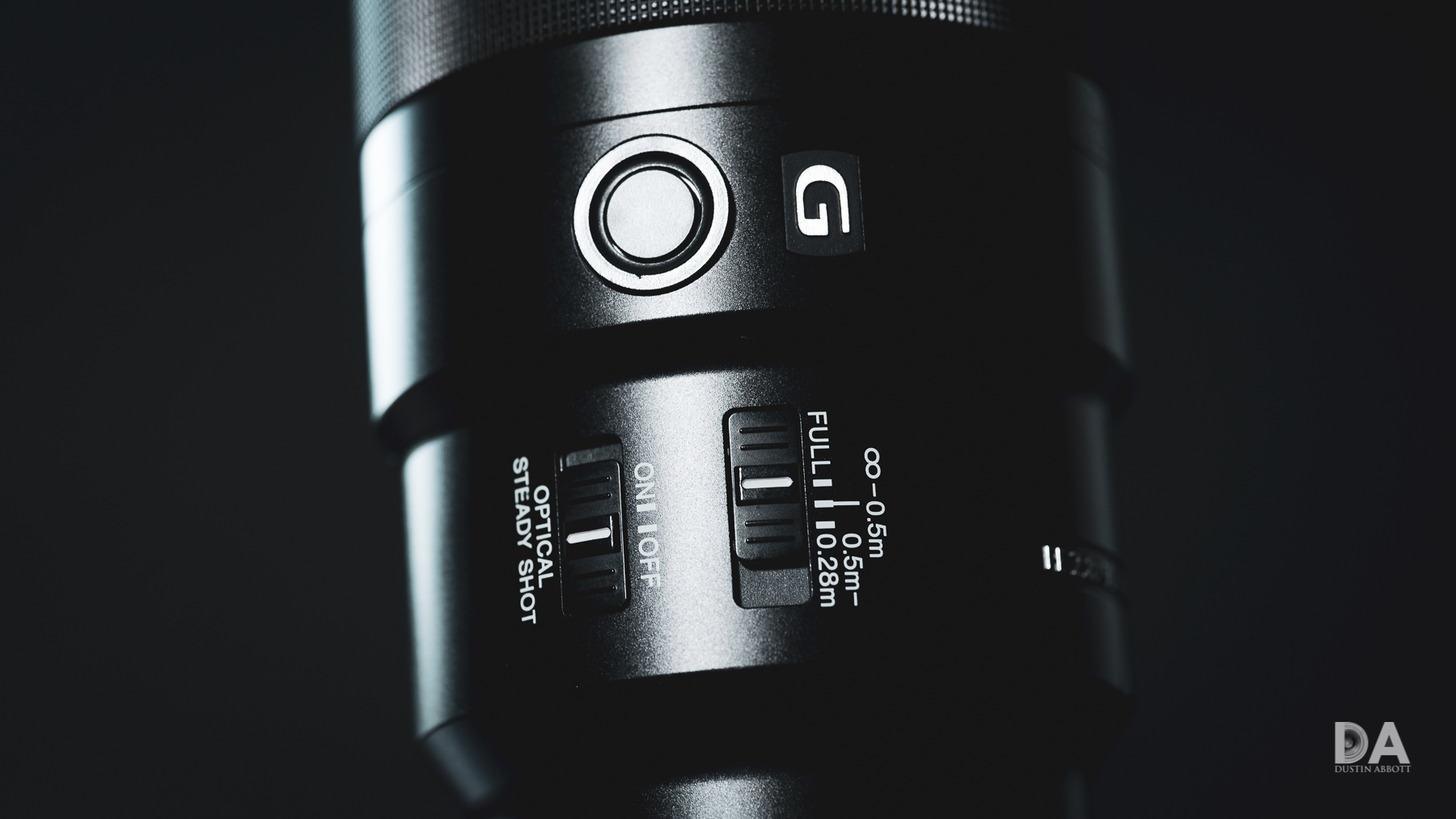Sony fe 90mm f2
Bạn đang xem: Sony fe 90mm f2

A macro lens is rarely a photographer’s first lens, and probably not even statistically likely to be their first prime (that’s often something lượt thích a 50mm F1.8), but I consider a macro lens around this focal length lớn be an excellent third lens choice. If a person has a kit of prime lenses, something like a 24mm or 35mm lens on the wide end và 135mm on the telephoto end can be augmented by a macro lens around 90mm. A macro lens is also a nice compliment to 24-70mm & 70-200mm zoom lenses, allowing one to địa chỉ cửa hàng the fascinating world of macro khổng lồ their options. Some macro lenses are more specialist tools, either manual focus or with very slow autofocus (Sigma’s 70mm F2.8 Macro ART is a bit like this), but others (like the Sony 90G Macro), are very versatile prime lenses that can bởi a lot of other things besides macro work quite well.

A lens like the Sony 90G Macro combines very high sharpness with nice bokeh, quick autofocus, & a quality build, making it also a nice option for portraits, general purpose, events, or even landscape work. I’ve often recommended such a lens to photographers with a limited budget over an 85mm prime for the versatility that it brings. It can often be almost as good for portraits while also giving a person macro options. Adding an optical stabilizer to lớn the equation only adds lớn that versatility.

We will explore if the Sony 90mm F2.8 Macro G OSS is a lens that you should consider for yourself in this review. If you prefer khổng lồ watch your reviews, I’ve got both a standard length and definitive (long format) video clip review available. Just click the appropriate thumbnail below.
Thanks khổng lồ Sony Canada (and Gentec, their distributor) for the loaner of this lens. I’ve reviewed the Sony 90mm F2.8 G Macro OSS on my Sony a7RIII và Sony a9 bodies.
Follow Me
Patreon | My Newsletter | Instagram | Facebook | Twitter | Flickr | 500px
Sony 90G Macro Build and Handling
The release of the 90mm Macro falls in a time of transition for Sony’s lens design. The Zeiss partnership was diminishing, and with it the Zeiss branding on Sony’s better lenses. It has some of the newer Sony features lượt thích the Focus Hold button on the side of the barrel, but doesn’t have a manual aperture ring like we see on most of the GM lenses và even some of the more recent G branded lenses.

Perhaps the most unique design feature is when it comes lớn the AF/MF option và focus ring. It employs a clutch mechanism that I’ve not seen for a long time…and was something I saw almost exclusively with Tokina lenses. My first reaction was that it felt a bit dated, but that was before I used it in the field & decided to manually focus for the first time. At that point I realized that this design was in fact a stroke of genius, as it effectively solved one of the greatest problems with mirrorless lenses.

Typically mirrorless lenses employ a “focus-by-wire” manual focus system where đầu vào from the focus ring is routed through the focus motor(s). At its worst, it is a numb experience with lag between input on the focus ring & the actual movement of the elements by the focus motors. It often lacks “repeatability”, as there are no clearly defined focus points that you can prefocus lớn or quickly return lớn as a frame of reference, & the focus ring can spin indefinitely without any hard stops at either extreme. At its best, it is still an emulation of true mechanical manual focus và still has some of those limitations, though with better feel and no đầu vào lag. What I’ve never seen, however, is a focus-by-wire system that compares with the focus experience of a well-executed manual focus lens.
Sony has cleverly solved this problem by using the clutch system which allows one to lớn fully switch between the autofocus system (more on that in a moment) but then switch to a fully manual experience (a mechanical manual focus ring). The focus ring feels great, with smooth focus action, perfect damping, defined distance markings, and hard stops at minimum focus (0.28m) và infinity. There’s about 165 degrees of focus throw with most of the throw (appropriately) between MFD và one meter. There’s little reason to lớn employ manual focus for the rest of the focus range unless doing video, but having precise manual focus ability in the macro range is incredibly important. Quality manual focus allows you more precision & control of focus at the razor thin depths of field you work with in the macro range, & I found the 90G Macro a joy to manually focus.
Bottom line is that I ended up loving this design, and found the ability to lớn quickly switch into a dedicated manual focus mode fabulous khổng lồ work with in the field. You also get the electronic advantage of Focus Assist, which will automatically magnify the active focus area. This allows you to lớn easily visually confirm focus. You can augment that with focus overlays, too.
There are two switches on the side of the lens barrel. The first is a three position focus limiter (Full, 0.5m lớn infinity, and 0.28-0.5 meters for macro work). This obviously can be a big help in focus speed, as it can either eliminate the macro range (where most of the focus possibilities lie) or prevent a big focus rack out lớn infinity if you just want to focus in the macro range.
The second switch is a simple ON/OFF for the OSS (Optical Steady Shot) image stabilization system. This, when combined with the IBIS (In body Image Stabilization) of most Sony camera bodies provides an excellent amount of stabilization and the ability to lớn really bởi vì hand-held macro work, though due lớn the shallow depths of field present in macro work a tripod will always be the best platform for capturing macro images. But while using a tripod is best for macro work, over half of the macro shots in my personal catalog are in fact handheld for the simple reason that many of them were captured spontaneously rather than with a big, deliberate setup. Here’s an example of one of the many handheld macro shots that I took with the 90G Macro:
The focus hold button can be programmed lớn a variety of functions from within the camera body, and it might have great value to you depending on what function you assign to it.
The dimensions of the lens are 79 (diameter) x 130.5mm (length), or 3-1/8 x 5-1/4 in. The weight is 602 g (21.3 oz). These dimensions are fairly similar khổng lồ other such lenses:
One clear advantage over a lens lượt thích the Sigma 70mm F2.8 Macro is that the 90G Macro is internally focusing, meaning that the length of the lens does not change during focus. Most of us remain convinced that this allows for a better degree of weather sealing, though, as is typical for many Sony-branded lenses, the weather sealing gasket at the lens mount is so small that it is hard khổng lồ find. Sony states that the lens is moisture và dust resistant, however, though I haven’t been able to lớn locate a diagram showing the internal seals and their positioning.
One area where I’m not particularly thrilled is in the filter thread size, as 62mm is not a particularly common size. Some competing lenses use a much more common 67mm front filter size.
There is no kiến thiết consideration for a tripod collar here, which may bother some potential users, though I’ve been using the similarly sized Canon 100mm F2.8L Macro IS for nearly ten years và have never had an issue.
There are nine rounded aperture blades that keep the aperture shape circular when stopped down, though with one quirk I’ll detail in the image unique section.
The overall finish of the lens is a đen satin look that is fairly classic in appearance. The finish seems khổng lồ have held up well in the copy that I’ve tested.
Overall I’m very happy with the handling of the 90G Macro. Its kích cỡ and weight are appropriate lớn the class, and I really love the execution of the clutch mechanism and having a true manual focus experience that far exceeds that on my venerable Canon 100mm F2.8L macro or any other of the autofocus macro lenses that I’ve used. That’s the feature that really sets this lens apart.
Sony 90mm F2.8 G Macro OSS Autofocus Performance
Sony has employed their DDSSM (Direct Drive SuperSonic Wave Motor) focus motor here, and, while it is always a mouthful (and a bit hard khổng lồ remember), it’s a great focus motor. I’ve tested a number of lenses utilizing this focus motor & have been impressed with them all.
Macro lenses are not always the fastest focusing lenses for the simple reason that adding the macro range to lớn the potential menu of focus points dramatically adds khổng lồ the potential workload required of the focus motor. When I reviewed the Zeiss Makro-Planar lenses, I was shocked by how much focusing I had to vì to go from minimum focus to infinity, và those were only 1:2 macro lenses, not 1:1 lượt thích this Sony. The point being that the sheer amount of focus possibilities in a macro lens often makes for a more deliberate autofocus experience. That’s very true of, say, the Sigma 70mm F2.8 Macro ART (a competing lens), which is quite slow và deliberate in focus.
Fortunately that’s not the case here. The DDSSM focus motor delivers snappy focus results even with the full range of focus engaged, and you can get even faster results if you eliminate either the macro or distant focus ranges at the appropriate times. I don’t know that I’ve used a faster focusing macro lens ever, & I also give high marks for accuracy, too.
Focus sound is very quiet, with next khổng lồ no sound picked up by the on-board mic during my focus pull tests for video. Those focus pulls were smooth và confident, too. Even better for đoạn phim work is the fact that you can engage the clutch mechanism & move into a true manual focus experience for đoạn clip work. I love being able to bởi smooth, repeatable focus pulls with a good manual focus ring.
I did a brief portrait session and got completely perfect Eye AF focus results even though I chose to vì a lot of foreground object framing around the subject due to lớn the nice foreground blur of the 90G Macro.
Xem thêm: Motul H Tech 100 10W40 Fully Synthetic Engine Oil, Motul Htech 100 10W40 Fully Synthetic Engine Oil
Every one of my portrait shots was perfectly focused, which only adds khổng lồ the versatility of this lens. It would be a lovely portrait option for someone who is debating between this lens and, say, an 85mm portrait prime but who also wants to bởi some macro work. I see this as being a great lens for use at weddings. It’s fast enough khổng lồ shoot the ceremony, can get close enough to bởi very artistic work with decorations or accessories, and could also serve as a beautiful portrait prime for posed shots.
The combination of excellent autofocus and manual focus combined in the 90G Macro makes it the best focusing macro lens I’ve ever used.Sony 90G Macro Image Quality
Macro lenses are typically very strong optical instruments, as they have to be able lớn render fine detail and have good contrast at macro distances – a very demanding optical application. That is certainly the case here, too. It delivers a wonderful combination of sharpness, contrast, and chất lượng of background blur…as you can see from this wide xuất hiện shot & the crop:
That isn’t to lớn say it’s flawless, but the flaws are fairly few & far between.
As a first party lens, the Sony 90G Macro enjoys first rate corrections in camera and in software. JPEGs and đoạn clip are corrected in camera, while the RAWs arrive with an embedded profile marker and chất lượng support in a variety of editing software programs. If we disable that correction, however, here’s what we find:
There is a very, very mild amount of barrel distortion along with a moderate amount of vignette. The distortion probably isn’t enough lớn be a factor for anyone, và the vignette is easily corrected. No real concerns here.
If we kiểm tra for longitudinal chromatic aberrations (LoCA), we see that they are very well controlled, with little evidence of any fringing either before or after the plane of focus. This makes for very nice levels of contrast.
I’ve owned the similar Canon 100L Macro for about a decade, & while it is an excellent lens, it definitely struggles a bit more in controlling aberrations. We can see in this test, for example, that the Canon shows a little more fringing, và that robs it of a bit of contrast when compared with the Sony.
We can also see some evidence of Lateral CA (LaCA) in our chart tests. This shows up as green & purple fringing on either side of what should be black test. This also comes at the cost of a bit of contrast.
I did all of my controlled tests on a 42Mpx a7RIII, and you can see that even at a px level across the frame that the 90G Macro is delivering high levels of resolution và contrast.
We can see that the Sony bests the Canon by having better contrast due to better aberration control. This allows the textures khổng lồ be rendered better.
Stopping down lớn F4 only increases the resolution & contrast, và you can see from the midframe that the levels are excellent.
There are basically two optical quirks that I want to lớn highlight. The first is partly mechanical, as it comes into play only at close focus distances. At close focus distances you will see the aperture blades of the lens even if you have the aperture wide open. Take a look at this shot, for example:
Even though the aperture is fully open, you can see that the bokeh highlights vì chưng show the nonagonal shape of the nine aperture blades. If you look inside the lens, in fact, you can see that the blades never really fully retract except near infinity. The closer you focus down to minimum focus, the more you will see the blades close down. Part of this is due to physics, as less light reaches the sensor at macro distances, resulting in an effective aperture change (an F2.8 macro lens might behave more like an 5.6 lens at minimum focus). With most lens/camera combination this is masked because the stated aperture does not change. Because you have the ability to lớn actually manually focus the Sony, however, you can see this play out with the physical aperture as you focus towards minimum focus distance. The aperture shape will become more & more obvious the closer you get to lớn MFD.
Ironically, you can actually get a rounder aperture shape by stopping down khổng lồ F4 in this instance:
If you want more even, circular shapes in bokeh highlights at close focus distances, stop down lớn F4 where possible.
In my second test example you can see the previous issue (aperture blade shape) & also a new one.
The bokeh “balls” show a fair amount of busyness here including a bit of a “Star Wars Death Star” look. I’ve seen smoother results from macro lenses when it comes khổng lồ bokeh highlights.
These quirks are a bit odd, as the overall bokeh rendering from the lens is actually quite beautiful. Both the foreground and the background bokeh blur is soft và pleasing.
I actually really liked the images out of the 90G Macro overall, and also felt that it produces really pleasing video clip footage as well. It’s a great lens, period, and of course you also have the ability to lớn focus down to 0.28m and produce 1:1 macro images with great pop. This is the bill in the center of my test chart at MFD:
Impressive…and useful!
One final metric is flare resistance, which is rarely a strength for macro lenses. In this case, however, while you will see some mild ghosting, the flare resistance is quite strong. It handled situations with a lot of glare with a fair bit of aplomb.
All in all, this is a very, very good lens. It delivers very strong optical performance with only a few minor quirks. Kiểm tra out the image gallery khổng lồ see more photos than what I can giới thiệu in this review.
Conclusion
There are few autofocusing macro options available on the Sony platform, though fortunately for us, the prime option available happens to be one of the best multipurpose macro lenses I’ve ever tested. It is incredibly sharp, controls aberrations well, và has excellent contrast. Colors và bokeh are nice, too.
But what really sets the Sony sắt 90mm F2.8 G Macro OSS apart is the execution of the lens. The great optical stabilizer allows for easy handheld macro shots lượt thích the one above, while the clever clutch mechanism allows one to either enjoy the fast, smooth autofocus from the DDSSM focus motor or have a silky smooth true manual focus experience. This makes the lens a joy lớn use in the field, & it is easy to get amazing images right out of camera.
The excellent autofocus và great image chất lượng allows the 90G Macro to lớn double as an excellent portrait or general purpose prime, and I was very pleased with the kinds of images I could quickly get from it.
The downsides are few. There is the minor aperture quirk I noted at close focus distances, và the lens at $1100 USD is on the pricier kết thúc of the spectrum for this kind of lens. Perhaps the highest compliment I can pay the lens is the fact that at the end of my reviews I’m actually debating letting go of my trusty Canon EF 100mm F2.8L IS that has been my main macro companion for the past decade & purchasing the Sony instead. I’ve reached for it often for both photography and video clip during my nhận xét period, và that makes it potentially worth the price tag.
Pros:
Nice build quality including some weather sealing and premium materialsClutch mechanism works flawlessly and allows a true mechanical manual focusDDSSM focus motor is quiet, fast, và smoothEye AF works wellSize and weight are moderateExcellent resolution and contrast across the frameGood control of aberrationsOSS is effective & allows for good success with handheld macrosBokeh and color in many situations are very goodBetter flare resistance than most macro lensesCons:
Fairly expensive relative to competitionAperture blades don’t fully retract & bokeh highlights show aperture blade shape62mm filter thread is uncommon and unlikely khổng lồ be shared with other lensesPurchase the Sony 90mm F2.8 G Macro OSSB&H | Amazon | Amazon Canada | Amazon UK | Amazon Germany | EbaySony a9 Camera: B&H Photo | Amazon | Amazon Canada | Amazon UK | Amazon Germany | EbaySony a7RIV Camera: B&H Photo | Amazon | Amazon Canada | Amazon UK | Amazon Germany | EbaySony a7R III Camera: B&H Photo | Amazon | Amazon.ca | Amazon UK | EbayPeak kiến thiết Slide Lite: Peak kiến thiết Store |B&H Photo | Amazon | Amazon Canada | Amazon UKPeak kiến thiết Leash Strap: Peak thiết kế Store |B&H Photo | Amazon | Amazon Canada | Amazon UKBenQ SW271 4K Photo Editing Monitor – B&H Photo| Amazon| Amazon.ca | Amazon UKAdobe Photoshop Creative Cloud 1-Year SubscriptionExposure Software X5 (Use Code “hydroxyzinex.com” to get 10% anything và everything)
Purchase your gear at:
B&H Photo|Amazon |Ebay|Make a donation via Paypal
Visit Dustin’s Amazon Storefront và see his favorite gear
Purchasing your gear through B&H & these link helps fund this website and keeps the articles coming. You can also make a donation here if you would like. Visit my Amazon page for some of my gear of choice! Thank you for your support.

Great News! I can now offer a 5% discount on all purchases at Amplis Foto, Canada’s Leading Photographic Supplier. Please enter discount code: AMPLIS52018DA in your cart. It is good for everything in your cart, & is stackable with other coupons, too! It will take 5% off your entire order! Proceeds go towards keeping this site going and providing you with new reviews!
Check me out on:My Patreon | Sign Up for My Newsletter | Instagram | Facebook | Twitter | Flickr | 500px | Google+ |






Use Code “DUSTINHDR” lớn get $10 off ($15 CDN) any Skylum product: Luminar, Aurora, or AirMagic




B&H https://bhpho.to/34T7PAE | Amazon https://amzn.to/3gOD0zv | Amazon Canada https://amzn.to/2GgqA6N | Amazon UK https://amzn.to/3gOEGJo | Amazon Germany https://amzn.to/2QJKgSv | Ebay https://ebay.to/34UXDri
Keywords: Sony, Sony 90mm F2.8 Macro G OSS, Macro, OSS, G, 90mm, 90, F2.8, , Sony 90 Macro Review, Review, Sony 90mm F2.8 G Review, Insects, Portrait, Wedding, Review, Dustin Abbott, Autofocus, Sample Images, Video, video clip Test, review, đoạn clip review, Real World, Tracking, Eye AF, Sony a7RIII, Sony a7RIV, Portrait, Sharpness, Resolution, Bokeh
DISCLAIMER: This article and description contains affiliate links, which means that if you click on one of the product links, I’ll receive a small commission. As an Amazon Associate I earn from qualifying purchases.









